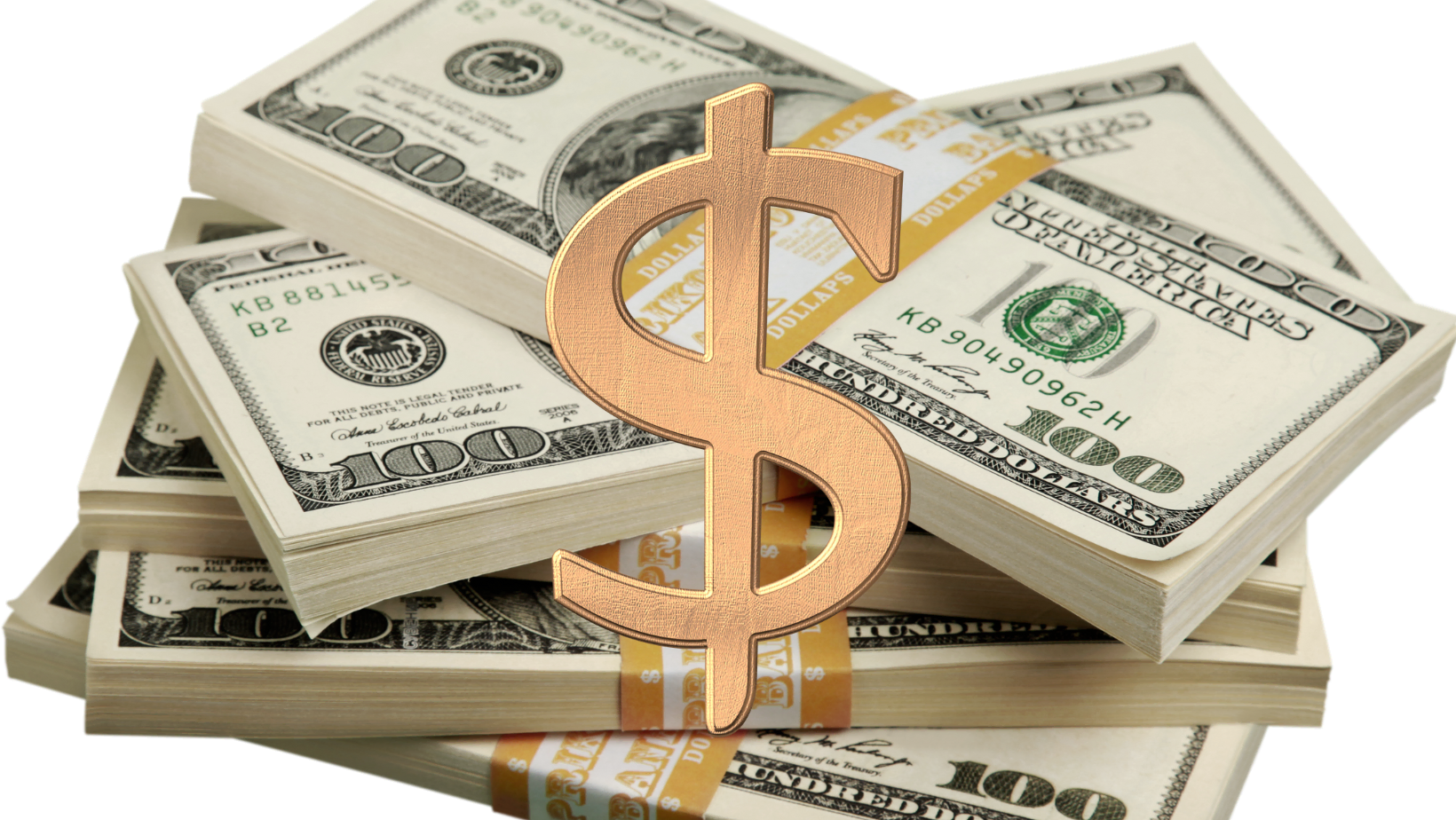Why is the U.S. dollar the world currency?
Table of Contents
A global currency is a currency accepted for global trade. Most of the world currencies are accepted for most international transactions. The most popular currencies in the world today are the US Dollars, Euros, and Yen. The US dollar is also called a world currency or the world’s reserved currency. When we look at the global financial markets, the currency scene, which we call world currencies or currencies, always dominates. The most popular currencies in the world today are the US dollar, the euro, and the yen. However, the US dollar still dominates among the three most popular currencies in the world today. Why is this?

The US dollar world currency: the growth
Long ago, world currencies are pegged to the US dollar. After World War II, the United States became the most powerful economy in the world. As gold and silver did not have bank reserves to support monetary growth, the economy began to fall behind the gold standard and relied on printed paper money. By then, the United States had started making more paper money to finance the growth of the global economy. Thus, the US dollar became the most powerful currency in circulation and fuelled its growth as a global currency.
Although it has no official status or is designated as the world’s official currency, the US dollar today makes up 64% of the central bank’s known foreign exchange reserves, making US Dollar the world currency. The US dollar remains the dominant currency in over 60% of all countries.
The US dollar is the most widely used currency, as per International Monetary Fund (IMF). It constituted more than 60% of the central bank’s recorded foreign exchange reserves as of the 4th quarter of 2019. Even without a formal naming, it became the de facto global currency.
The Euro is the next most reserved currency. This represents 20% of the central bank’s total reported foreign exchange reserves. The eurozone crisis has obliterated the euro’s chances of becoming the world’s standard. The problem of currency reunification driven by individual nation-states was shown as a result.
The US dollar is the most powerful currency in the world

The relative strength of the US economy supports the dollar. This is why the dollar is the most powerful currency. As of 2018, U.S. circulation was $1.671 billion. It is estimated that half of this amount is circulating abroad. Most of these banknotes are found in the former USSR and Latin American countries. It is often used as cash in everyday transactions.
Notice:
The dollar controls the foreign exchange market. About 90% of foreign exchange transactions are done in US dollars. According to the International Institute of Standardization’s list, the dollar is only one of 185 world currencies, but most are used only in their home countries.
Theoretically, the dollar could be replaced with any world currency, but most won’t work because they are not traded.
Notice:
Nearly 40% of world debt is issued in dollars. As a result, foreign banks need a lot of dollars to do business. This became clear during the 2008 financial crisis. The international debt of non-US banks was $27 trillion in foreign currencies. Of this, $18 trillion is US$5. As a result, the US Federal Reserve (Fed) was forced to raise the exchange rate. That was the only way to protect the world banks from the dollar.
The financial crisis made the dollar more popular. In 2018, banks in Germany, France, and the UK had more dollar debt than their currencies. In addition, banking rules were adopted to avoid a new crisis of dollar deficits, and the Federal Reserve raised federal funds rates. This will save money, making it more expensive to borrow in dollars.
The dollar’s strength is why the government wants to keep the dollar as a foreign exchange reserve. Governments acquire currencies through international trade. They also get it from local businesses and travelers who exchange it for local money.
Some governments invest their foreign exchange reserves. China and Japan intentionally purchase currencies from their key export partners. The US is China’s largest export partner and Japan’s second-largest export partner. The US strives to keep its currency cheaper than exports at competitive prices.
Why the dollar is the world currency

The 1944 Bretton Woods agreement restored the dollar’s present value. Before that, the gold standard was used by the majority of nations. Their administration has vowed to purchase back the money when it is required for the price of gold.
At Bretton Woods, New Hampshire, advanced economies met to lock in all US dollar exchange rates. The United States possessed the largest gold reserves at the time. Other countries were able to fund their currency in dollars rather than gold as a result of the arrangement.
Countries began demanding gold in dollars in the early 1970s. The Bretton Woods agreement, sometimes referred to as the Bretton Woods agreement requires the central bank to establish a currency peg against the dollar.
In exchange, the US will swap US dollars for gold on demand. When the value of a country’s currency is either too low or too high in relation to the dollar, the country may exert some control over it. They have the ability to purchase and sell currencies in order to control the money supply.
Inflation had to be fought. Rather than deplete Fort Knox’s holdings, President Nixon decided to unpeg the currency from gold.
The dollar had already established itself as a key global reserve currency by that time. Separating the value of the dollar from the value of gold, on the other hand, created a decline. This is the result of a mixture of inflation and slow growth.
Independent standing as the global reserve

As a result of the Bretton Woods Accord, the US dollar was officially recognized as a global reserve and backed by the world’s largest gold reserve. Instead of gold reserves, other countries have accumulated reserves in US dollars. Because they needed a place to store their dollars, countries began to buy US government securities, which they saw as safe deposits of money.
The demand for government securities, the limited spending needed to finance the Vietnam War, and the Big Society’s own programs resulted in the US flooding the market with its paper money. Amid growing concerns about the stability of the dollar, countries started re-converting their dollar reserves into gold.
The outcry for a single-world currency
China and Russia requested a new world currency in March 2009. They wanted people to “eliminate the major limitations of leverage by generating reserves that can stay stable over time without being connected to individual countries,” as they put it.
China was concerned that if dollar inflation began, trillions of dollars would become worthless. This could be owing to increased US budget deficits and the issue of US Treasury bonds to help finance the country’s debt. The International Monetary Fund (IMF) has been pushed by China to design a currency to substitute the dollar.
The Chinese yuan turned into one of the world’s largest foreign exchange reserves in the final quarter of 2016. The reserves of the world’s federal reserves were $221 billion during the first quarter of 2020, as per the IMF. This is a modest portion of the $6.8 trillion total, but it will continue to increase.
China wants its yuan to be traded entirely on the international forex trading market. He wants the yuan to take over as the world’s currency from the dollar. China is transforming its economy in this direction.
The dollarization

Dollarization is using dollars together or in lieu of the national currency. Such events may occur without the legal or official consent of the US government. Dollarization falls into three categories:
1. Official Dollarization – This occurs when a country stops using its currency and completely replaces the US dollar. Some countries using it are Ecuador, El Salvador, and Zimbabwe.
2. A halfway dollarization is when a country uses the US dollar and its currency. Countries such as Cambodia and Lebanon are a few examples.
3. Unofficial Dollarization – This is where you receive US dollars from private transactions. However, it is not officially considered legal. This is the practice in most developing countries of the world.
Notice:
The stability of the dollar and the fact that it is a world currency are the main factors that countries use as official and unofficial currencies. It also provides a safe and stable economic environment for the country.
The state of the dollar today
According to the International Monetary Fund (IMF), US dollars account for more than 61 percent of all national bank reserves. Most of the reserves are held in cash or bonds issued by the United States, including Treasury bonds. Furthermore, approximately 40% of global debt is pegged to the dollar.
The massive size and strength of the US economy and the supremacy of US financial markets significantly impact the reserve’s health. Despite significant deficit spending, billions in debt, and newly produced US dollars, US government assets remained the healthiest place to put money. The dollar remains the most redeemed currency for promoting global trade because the world trusts in America’s capacity to pay off its debts.
Conclusion – The US dollar is the world currency
Notwithstanding billions of dollars in public debt and persistently significant fiscal deficits, the United States enjoys global trust and confidence in its capacity to handle its responsibilities. As a result, the US dollar remains the world’s most powerful currency. For many decades to come, this should remain the best reserve currency.
Nevertheless, the dollar’s present position as the world’s reserve currency is debatable. Countries like China and Russia fear that a new single currency supported by no other country is trailing behind in a more linked world economy.
FAQ – The most asked questions about the US dollar world currency:
What makes US dollar the world currency?
The United States of America’s stability and good economic position turned out to be a plus point for the US dollar. It makes the US Dollar the world currency. US Dollar is a commonly traded currency that settles various world economic transactions. Thus, the US Dollar is powerful in comparison with other world currencies.
Why is the US dollar the world currency for settling transactions?
The US Dollar is the world currency for settling international transactions. It is because most international currencies get pegged against the United States Dollar. Thus, it is apparent that the US Dollar is to be used as a payment settler for various transactions. It is used worldwide to settle the sale and purchase transactions between different nations.
What should one know about the US dollar as the world currency?
The US Dollar is a powerful currency for carrying on transactions. You might even find a lot of debt issued in this currency. Besides, all the leading international agencies use the USD Dollar to transact their business. So, it is popular. Even when you trade the US Dollar, it can allow you to earn considerable profits.
Last Updated on February 17, 2023 by Andre Witzel
